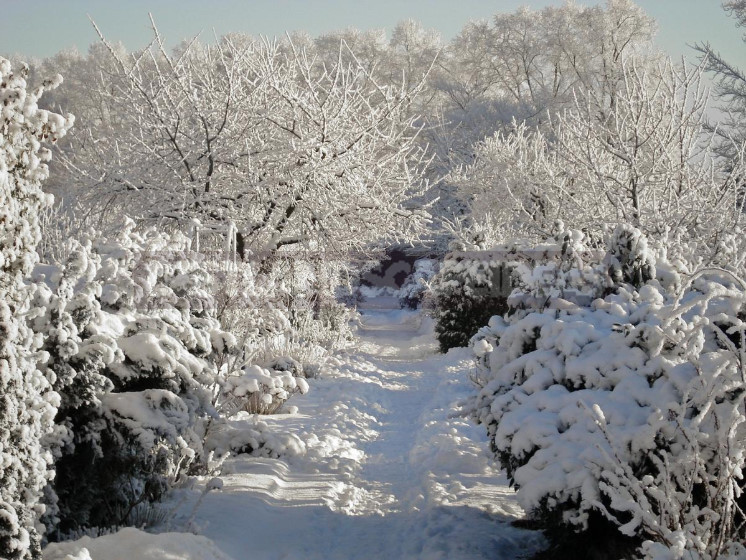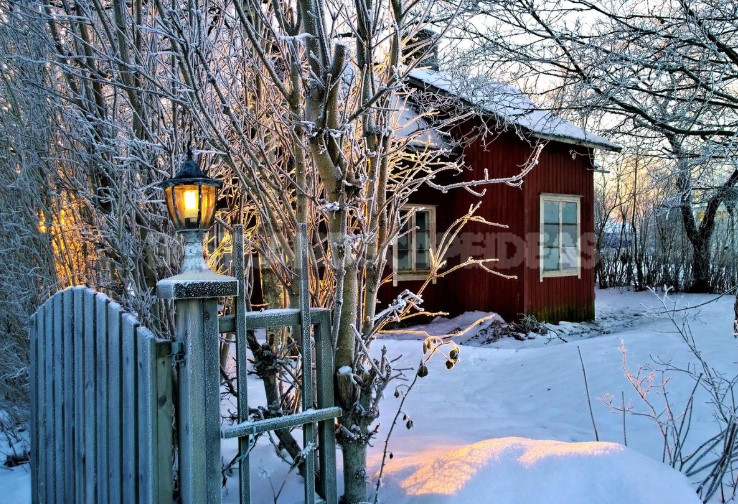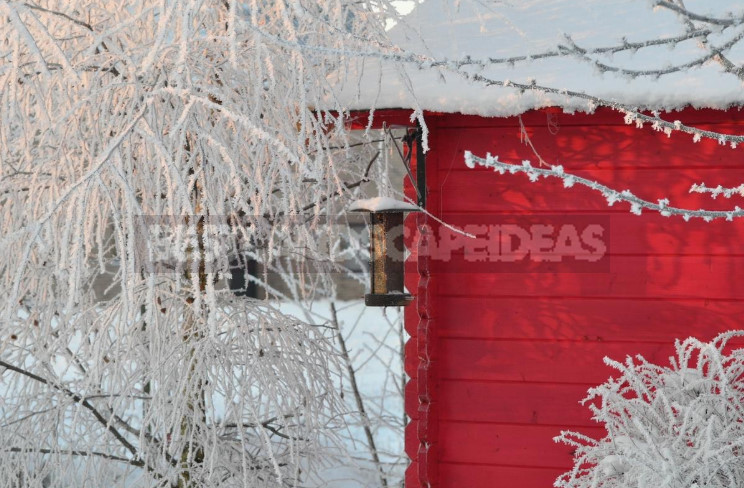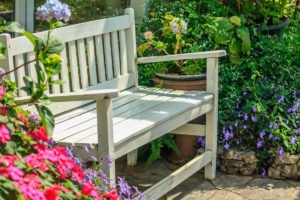
“If you have a long, snowy winter. It is necessary to use this condition directly in the work. We often forget that the garden is not only plants, but also lighting, sculpture, small architectural form. Covered with snow, they can give new unexpected effects. You have to play with space and shapes.” Surprisingly, this-seemingly obvious advice we received from the famous English designer John Brooks.
But he is right – when planning his winter garden paintings, as a rule, do not take into account. In winter, when everything is covered with snow, the space seems to be compressed, limiting the movement of the garden network of paths leading to the house and other buildings, and the snow becomes the main accessory of the garden.
And there are many questions at once, the existence of which we had not guessed before. Do not damage the pavement snow and ice? Where to put snow from paths and platforms? Where will snow and icicles fall from the roof slope? Do not break down in this area plants, especially coniferous, so tight restoring the shape of the crown, lost from the exact hit of a block of snow with ice? It does not hurt established along paths garden lights while operating the machine?
All these questions should not remain unanswered, then miscalculations in the planning of the winter zone (and the whole garden as a whole) will be much less.

Serious attention should be paid to paving. Winter area it should be sturdy, not slippery, tightly Packed material. Good track with a width of 75-100 cm. They are easy to clear of snow, which is stored, usually near. Therefore, at least one side of the paving should be free from planting coniferous, valuable ornamental shrubs or young trees with fragile branches.
Great garden or small, in winter it significantly narrows its boundaries, turning into a small. Therefore, the task of visual enlargement of the garden is acute. To do this, you can try to organize an open space — for example, in the form of a paved area, the surface of a frozen pond or lawn.
If the open area is necessary to give an elongated shape, it is desirable to Orient it in the direction of the greatest extent that visually expand it. Platforms in the form of a circle or a square also seem much larger. Conversely, planting trees or shrubs on the lawn even more “squeeze” your garden.
Beautiful objects of observation should be organized so that they can be seen from the window of your favorite room, from the terrace, balcony, from the gate, from the barbecue area, from the turn of the track. Conversely, unattractive, bare in winter, the species should be excluded from the field of view. For example, large plants that require shelter from frost can be placed closer to the background.

Do not rush to saturate the garden with a variety of “beauty”. We are able to see and evaluate only one composition at a time. The rest should play at this time, the role of the background. If a beautiful object already exists, the rest should only complement it, not “argue” with it, distracting attention. For example, the prospect of opening from the living room of the house with a marvelous view of the forest in the distance, can hardly have a worthy addition in the form of a Parking lot in the foreground.
Whist in the form of a narrow targeted prospects are particularly spectacular. To do this, you can choose a remote from the viewpoints corner of the garden, where the focus of the view will focus on the accent. The object can be a large beautiful tree in the distance; gazebo in the opposite corner of the garden; garden sculpture at the end of the alley. For emphasis, the Vista is framed by scenes of the structural plants, screens, hedges.

It should be remembered that in winter the “walls” of deciduous plants become transparent and graphic. This should be taken into account in the layout, and if necessary, to provide a constant visual isolation and thus visually expand the space. It is appropriate to a live clipped or free-growing cover of coniferous or two or three-row planting of large ornamental shrubs.
Hedges of lilac, hawthorn, elderberry eventually become bare from the bottom, so if the choice fell on them, it is better to take into account this factor, planted immediately tamping of undersized shrubs or planning it for the future, reserving a place for it.
If landing most of the day is in the shade, it is better to choose Cotoneaster lucidus, Euonymus alatus, Symphoricarpos albus, Cornus white and red, Mahonia aquifolium. When the location of the planting in the sun will suit Berberis thunbergii, Dasiphora, Ribes aureum, and so on. Will be nice to feel shade-tolerant shrubs.

We need to think about the details of the “winter dress” for the garden — the size and silhouettes of large plants, creating, as a rule, the background, and maybe acting as dominants, and of course their compatibility in groups. These plants form the structure of the garden, and they must be, first, hardy and, secondly, well “read” depending on the distance to the observer and the size of the plant. You should consider the expense which will be decorative in the winter garden, which will focus on the attention.
Winter asceticism will pay off with an abundance of conifers. It is worth emphasizing that late autumn-winter-early spring is the time of their triumph when they solo in the garden. But do not limit yourself to them. Coniferous should be no more than a third of the number of large landings. In a large volume, they will “suppress” and create a gloomy mood, especially in the late autumn.

And here deciduous plants, many of which are reluctant to part not only with fruits, seeds, but even with leaves, will not yield to conifers in diversity. Syringa vulgaris, Chaenomeles japonica until late autumn are in a green outfit, sometimes under a coat of snow, slowly throw off the bright green leaves. They will be supported by a group of plants with decorative fruits and seeds that bravely demonstrate their right to exist in spite of cold winds and frosts, contrasting with white sparkling snow.
These plants deserve a special place in the garden (at the entrance to the house or in front of the Windows).

Good in the garden Symphoricarpos albus with beads large, juicy, long-standing on the branches of the balls. There are in Symphoricarpos and varietal brothers with pink and even blue-black bunches of berries. Throughout the winter, stored on the branches and create a “rustling” crown texture maple seeds, ash, Robinia pseudoacacia.
Forming plants in groups or separately, placing the necessary accents and considering distances to their review, emphasizing contrast of deciduous bushes with coniferous, it is possible to “weave” a unique pattern of a winter garden. And to complete the composition, make it more individual, memorable, help garden sculptures and other small architectural forms, designed in the same style.
The design often uses wood, as it is organic in the garden and helps to breathe the soul into the whole composition. But remember that you can complement the landscape composition, and spoil it.

Will the winter garden be as unique in its beauty as the summer one? Will it become a fragment of a”winter fairy tale”? I hope your answer is Yes! And the winter garden will attract you and your friends no less than the summer. But for this in the spring we have to think about how to make the winter garden unforgettable, and then with the arrival of autumn will not experience regret that the period of colors is over again.




Leave a Reply